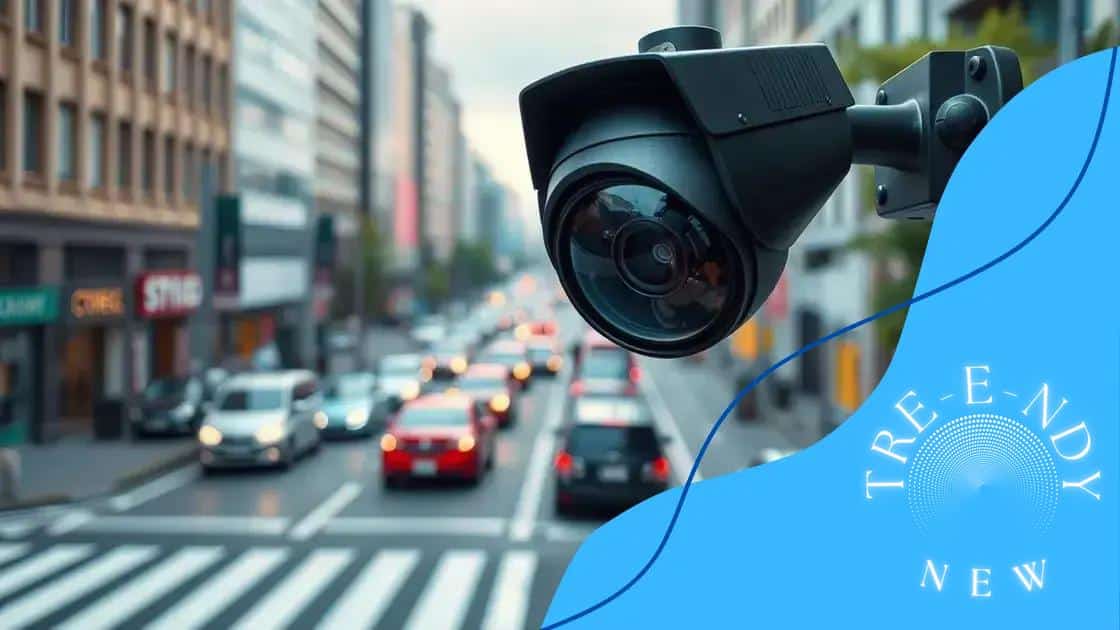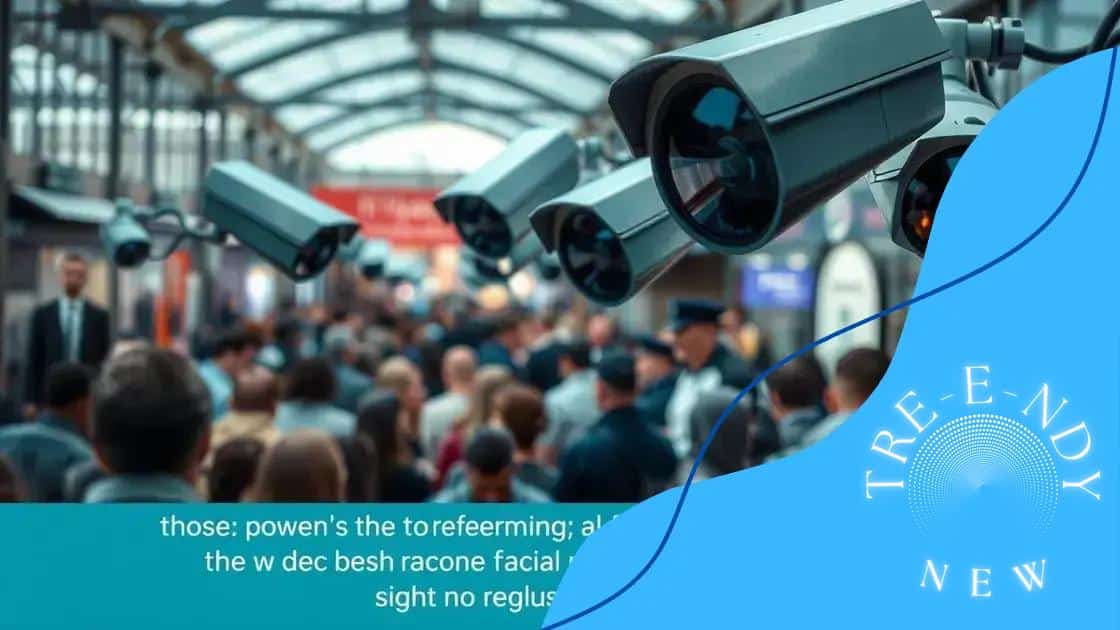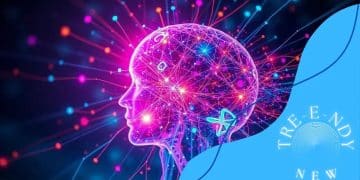The role of facial recognition in enhancing public safety

The role of facial recognition in enhancing public safety includes improved crime prevention, faster emergency responses, and the ability to identify individuals quickly, while facing challenges related to privacy and ethical use.
The role of facial recognition in enhancing public safety is becoming increasingly significant in our daily lives. Have you ever thought about how this technology affects your safety in public spaces? Let’s dive into its implications and real-world applications.
Understanding facial recognition technology
Facial recognition technology is transforming how we detect and identify individuals in various environments. This technology uses algorithms to analyze facial features, making it possible to match and recognize faces with impressive accuracy. But how does it work?
How Facial Recognition Works
The core process begins when a camera captures an image of a person’s face. This image is then converted into data points that represent the unique features of that face. The system compares these data points against a database of stored facial images.
- Image capture: Cameras take a photo of your face.
- Feature extraction: The system analyzes features like the distance between your eyes.
- Comparison: It checks the data against existing faces in its database.
- Identification: If there’s a match, the system confirms the identity.
Understanding the intricacies of this technology helps contextualize its importance in enhancing public safety. For instance, it can quickly identify suspects in crowded areas, assisting law enforcement.Facial recognition is also used in airports to streamline security processes, making travel safer and more efficient.
Benefits and Applications
Beyond security, businesses utilize facial recognition for various applications, including personalized customer experiences. Retailers can analyze shopper behavior to tailor services. This not only enhances customer satisfaction but also boosts sales.
Moreover, educational institutions are exploring this technology to improve campus security. By monitoring and recognizing faces on school grounds, they aim to create a safer environment for students.
As these applications show, facial recognition technology is here to stay. Its potential to enhance safety and efficiency in multiple sectors is immense, driving interest and investment in its development.
The benefits of facial recognition for public safety
The benefits of facial recognition for public safety are significant and multifaceted. This technology can help law enforcement agencies to quickly identify potential threats in real time. By analyzing faces captured through surveillance cameras, police can respond faster to incidents, enhancing community safety.
Improved Crime Prevention
Facial recognition acts as a deterrent for criminal activity. Knowing that cameras are equipped with this technology can discourage individuals from engaging in illegal actions. Moreover, it aids in preventing crimes before they happen by alerting authorities to suspicious behavior.
- Faster identification: Reduce the time taken to identify suspects.
- Monitoring crowds: Efficiently observe large gatherings for potential threats.
- Prior alerts: Receives alerts about known offenders in the vicinity.
- Enhanced cooperation: Improves coordination among different public safety departments.
When law enforcement can recognize individuals involved in previous offenses promptly, it helps to create a safer environment for everyone. In hospitals and airports, facial recognition enhances security by ensuring that only authorized personnel can access restricted areas.
Streamlined Emergency Responses
Another significant advantage is its role in streamlining emergency response efforts. In case of an emergency, facial recognition technology allows responders to quickly identify people who may require assistance. By accessing databases, they can confirm identities and provide timely help.
Furthermore, the integration of facial recognition in safety protocols leads to better resource allocation. Authorities can prioritize responses based on the identified risk level while effectively managing their operations during crises.
Challenges and controversies surrounding its use

The use of facial recognition technology presents several challenges and controversies that raise important questions about privacy and ethics. As this technology becomes more common, discussions surrounding its implications become increasingly vital.
Privacy Concerns
One of the biggest issues is privacy. Many people feel that facial recognition intrudes on their personal space. Surveillance cameras equipped with this technology can track individuals without their knowledge or consent, leading to feelings of being constantly monitored.
- Public surveillance: Many areas have cameras that capture faces, raising concerns about who is watching.
- Data storage: These systems often store vast amounts of data, risking unauthorized access.
- Consent issues: People rarely give explicit consent to be identified by these systems.
- Potential misuse: Data collected could be misused for profiling or discrimination.
In addition to privacy, there are concerns about the accuracy of facial recognition technology. Studies have shown that it can misidentify individuals, especially among people with darker skin tones. This increases the risk of wrongful accusations and raises questions about fairness.
Ethical Implications
The ethical implications of deploying this technology in law enforcement often come into question. Some argue it could lead to racial profiling or unfair treatment of certain communities. A focus on facial recognition in policing may exacerbate existing biases in the justice system.
Moreover, the lack of regulation around the use of facial recognition technology means that guidelines and best practices are still developing. Different regions may have varying laws concerning its applications, leading to inconsistencies and confusion about what is acceptable.
Real-world applications of facial recognition
Real-world applications of facial recognition technology showcase its versatility and potential benefits across various fields. As cities and organizations adopt this technology, its impact is becoming evident in everyday life.
Security and Law Enforcement
Within security and law enforcement, facial recognition is a crucial tool. It helps police identify suspects quickly during investigations. For example, in crowded events, law enforcement can scan crowds for known criminals. This proactive approach enhances public safety and aids in preventing crimes.
- Real-time monitoring: Surveillance cameras can identify potential threats instantly.
- Access control: Buildings and restricted areas utilize facial recognition for secure entry.
- Missing persons: Helps locate missing individuals by matching their images in public spaces.
Moreover, facial recognition technology is making its mark in airports and borders. Airports use it to verify travelers’ identities, expediting the check-in and boarding process. This leads to increased efficiency in travel while enhancing security measures.
Retail and Marketing
In the retail sector, businesses embrace facial recognition to personalize customer experiences. When shoppers enter a store, their faces might be scanned to analyze their preferences and tailor marketing efforts. This technology helps retailers understand consumer behavior more deeply.
For instance, stores can track how long customers spend looking at certain products. By combining facial recognition data with shopping habits, retailers can optimize layouts and promotions, ultimately improving sales and customer satisfaction.
Another interesting application is in healthcare. Hospitals use facial recognition technology to streamline patient identification. This reduces the likelihood of errors during treatment while ensuring that patient information remains confidential and secure.
Future trends in facial recognition technology
Future trends in facial recognition technology are set to shape how we experience security and personal interactions. As innovation continues, we can expect enhancements that will broaden the applications of this technology.
Increased Accuracy
One significant trend is the push for increased accuracy. Developers are continually refining algorithms to improve recognition rates. This will help reduce errors in identification, making facial recognition more reliable across diverse demographics.
- Algorithm improvements: New techniques will enable better feature extraction.
- Machine learning: Enhanced models will adapt to different environments.
- Cross-device compatibility: Better integration across devices and platforms.
Moreover, advancements in artificial intelligence will allow systems to learn from more data, enhancing their performance even further.
Privacy-First Solutions
As privacy concerns grow, we can anticipate a shift towards more privacy-first solutions. Developers will focus on creating tools that protect individuals’ data while still providing the benefits of facial recognition.
For example, techniques like decentralized facial recognition can be developed. This means that instead of storing facial data in a central database, it will reside on users’ devices, ensuring better security and privacy.
Integration with IoT
Another exciting trend is the integration of facial recognition technology with the Internet of Things (IoT). As smart devices become more common, facial recognition will be utilized to access and control them.
Imagine smart home devices recognizing who is at the door and adjusting settings accordingly based on the individual’s preferences. This personalized experience can significantly enhance convenience and comfort in everyday life.
As technology evolves, regulatory frameworks will also play a crucial role. Alongside advancements, laws are expected to adapt to ensure responsible usage of facial recognition, balancing innovation with public safety and ethics.
FAQ – Frequently Asked Questions about Facial Recognition Technology
What are the main benefits of facial recognition technology for public safety?
Facial recognition technology enhances public safety by improving crime prevention and enabling faster emergency responses.
What privacy concerns should we consider with facial recognition?
Privacy concerns include unauthorized data collection, the potential for misuse, and surveillance without consent.
How accurate is current facial recognition technology?
While accuracy is improving, especially with new algorithms, issues with misidentification still exist, particularly among certain demographics.
What ethical considerations are associated with the use of facial recognition?
Ethical considerations involve the fair use of the technology, potential bias in algorithms, and the need for regulations to protect individual rights.





